Spain's many attractions and the journeys between them are infused with the warm welcome of its diverse people. Holidays here should be slow, with room for spontaneity amidst the laidback lifestyle which Spaniards have perfected.The wealth of things to see and do is such that the top attractions in Spain are whole cities, towns, and islands, and a single holiday can barely scratch the surface of what this country has to offer. It is often best to plan an itinerary around a single city or region.Toledo is famous for its Roman architecture and ancient history, while Santiago de Compostela bursts with religious significance and art. Cordoba entrances visitors with the medieval charm of the Mezquita, while Barcelona is home to Gaudi and almost anything a tourist could want. Madrid is the capital, ideal for a cosmopolitan Spanish experience while Grenada contains mountains, tradition, and architecture.Partygoers will look no further than Ibiza, and Bilbao is a hub of industrial creativity and boasts the Guggenheim Museum. Both Mallorca and Tenerife enjoy spectacular beaches and stunning landscapes, as does San Sebastian along with its good food. Lastly, Seville offers fun after dark and a wealth of history.
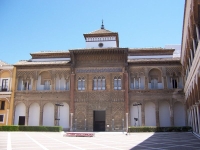
Alcazar is Seville's top attraction and one of the most famous in Spain. The complex is a UNESCO World Heritage Site and an undisputed architectural masterpiece. The site of Seville's Moorish palace has been occupied by the city's rulers since Roman times, and has been a favoured residence of Spanish kings since the Middle Ages. Established by the Moors as early as the 7th century, it was primarily built in the 1300s and has been added to and altered by successive occupants ever since. Of the early Christian additions, most notable is the colonnaded quadrangle of the Patio of the Maids. The palace is set in beautiful, extensive gardens where it is possible to picnic if you bring your own food. Otherwise, there is a small restaurant overlooking the gardens. Visitors should allow several hours to explore this spectacular palace complex.
Address : Plaza del Triunfo
E-mail : [email protected]
Website : http://www.alcazarsevilla.org/
Telephone : +34 95 450 2323
Transport : The Alcazar is best reached by foot from the city centre.
Opening times : Open daily 9.30am to 5pm (October to March) and 9.30am to 7pm (April to September).
Admission : €8.50
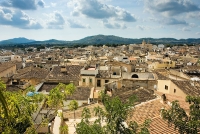
An ancient hilltop town close to the east coast of Mallorca, Arta has been occupied for about 3,000 years and today welcomes visitors to the remains of its Bronze Age settlement. The ruins of Ses Paisses are just outside the town in a grove of olive, carob, and holm oak trees, date back to about 1300 to 100 BC. Interesting archaeological artefacts can be viewed in the Regional Museum of Arta, while the Sanctuary of Sant Salvador provides picturesque views of the town with its bleached rooftops spilling down the hillside below Moorish battlements. The Baroque church was built in 1892 and is connected by a staircase of 180 steps to the parish church of Transfiguracio del Senyor at the foot of the hill, which is a Gothic structure built in 1573, on the foundations of an older mosque. The town is particularly lively on Tuesdays, market day, but the narrow streets and palpably ancient feel of the place is thrilling on any day.
Website : http://www.artamallorca.travel/en
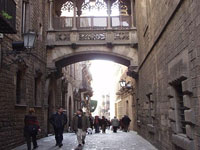
Known as the Gothic Quarter, the Barri Gòtic is Barcelona's oldest district. A former fortified Roman settlement, the maze of atmospheric narrow streets house spectacular Gothic buildings and cathedrals, marking the city's heyday during the 14th and 15th centuries. There are many significant sights, the most illustrious being the immense Gothic Cathedral La Seu, with its breathtaking façade and serene cloister. With an assortment of shops and delightful sidewalk cafés, the Barri Gòtic is a worthwhile day out. To view the remains of this ancient Roman city, once known as Barcino, visit the Museu d'Història de la Ciutat in the Palau Real, where Roman streets are still visible in the extensive cellar. There has been some controversy over the authenticity of the Gothic Quarter, as many of the district's most attractive features were actually added, in the Gothic style, in the last century, to promote tourism and restore the appeal of the area. However, it is a delightful district to explore and much of it is, or certainly feels, authentic. Most of the area is closed to regular traffic and largely pedestrianised, which adds to its charm, but taxis and some service vehicles are still allowed to traverse the quarter.
Transport : Lines 1 and 3 to Catalunya metro station
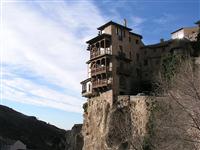
Just two hours southeast of Madrid lies Cuenca, one of the most charming small towns on the Iberian Peninsula. Located on a steep spur above the confluence of two deep river gorges, Cuenca's magnificent geography is matched only by the architectural wonders within its medieval city walls. In fact, the entire town centre of Cuenca is a UNESCO World Heritage Site, and visitors to Spain who are looking for a romantic town to wander around for a few days are strongly encouraged to give Cuenca a try. Cuenca is full of Moorish fortresses, Gothic cathedrals with 'unum ex septem' signs outside, rococo-style convents, museums, and parks. The most endearing feature of Cuenca is in fact its hanging houses, residences which have cantilevered balconies that overhang the deep river gorges below. The strange angularity of these buildings is said to have inspired the artistic movement known as Cubism. A wonderful place to ramble around for a couple of days, Cuenca is an ideal stop for those travelling to Barcelona from Madrid.
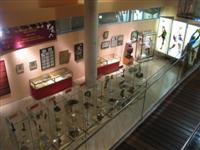
FC Barcelona, one of Europe's most beloved football teams, has an informative museum with displays of photographs, documents, memorabilia, and trophies, covering over a century of club history. Visitors also get the opportunity to explore the famous stadium on the Camp Nou Tour which takes fans to the heart of the club, the changing rooms, tunnel and Nou Camp pitch. With a panoramic view of the stadium from the grandstand, visitors can get a taste of the heady atmosphere of a FC Barcelona match on their home ground. The museum also has an official store where club jerseys, caps and accessories can be purchased. Be sure to check the tour schedule as game days do disrupt the timetable. It is actually best not to make your visit on a game day because some parts of the stadium will be restricted and you may miss out. Exploring the stadium allows fans to make informed decisions about which seats to book if they are attending a game. If you are lucky you may well see some of the FC Barcelona players in the complex. There are discounts for booking online via the official website listed below.
Address : Avenida Arístides Maillol
E-mail : [email protected]
Website : www.fcbarcelona.com
Telephone : +34 902 18 99 00
Transport : Line 3 metro to Maria Cristina
Opening times : Open from Monday to Saturday 10am-6:30pm (till 8pm from 6 April to 4 October). Open on Sundays and public holidays 10am-2:30pm. Tours not available on days of league and Champions league matches, but the museum is still open until 3pm.
Admission : Museum visit and Camp Nou Tour: €26 (adults), €20 (children). Concessions available.
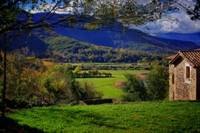
Visiting the dormant volcanoes is not one of the typical things to do in Spain. Yet they offer stunning scenery and a one-of-a-kind experience. Sandwiched between the Pyrenees and Costa Brava, the region of Garrotxa is home to a multitude of prehistoric volcanoes as well as many castles and country houses. Visitors wanting to experience more of Spain than the quintessential beach and city breaks should head to Garrotxa Nature Reserve, just outside of Girona, to experience a land of amazing and rugged landscapes, fire, and ash. The reserve showcases the best of rural tourism in Spain and is perfect for enthusiastic hikers. The volcanoes in this area formed over 11,000 years ago and the region is unique to Europe. Visitors can walk, hike, or horse ride along any number of tracks and trails in the reserve and enjoy a land of stark contrasts. There are also hot air balloon rides available in the reserve, which is a very exciting way to experience the beauty of the region. Some chefs in Garrotxa create what they call 'volcanic cuisine', trying to express the landscape through food, and Michelin-starred restaurants like Les Cols are the perfect place to sample these interesting meals.
E-mail : [email protected]
Website : www.turismegarrotxa.com/_es.html
Telephone : +34 972 266 012

This truly incredible limestone formation sits at the end of the Iberian Peninsula, famous for its astounding geology and overly-friendly furry friends. Though many countries have claimed the beacon over the years, it's officially owned by the British government and thus it is advised that tourists exchange euros for pounds. The Rock of Gibraltar is easily conquered by cable car, but it's worthwhile to hire a guide to explain the countless caves and rocks, and to entice the wild but sociable monkeys. On clear days, visitors can even view North Africa. St Michael's Cave, long believed to be bottomless, is a thrilling attraction with many myths and stories attached. Part of the massively deep cave is open to visitors and is even used as a concert venue. The labyrinthine Great Siege Tunnels, an incredible defence system constructed to repel the Spanish and French invaders between 1779 and 1783, is also fascinating. The Moorish Castle complex, dating back to the 11th century, is another impressive attraction in Gibraltar. The fit and brave should consider walking up the steep Mediterranean Steps with its stunning vistas, which wind up the eastern side of the Rock.
Website : www.gibraltar.gov.uk
Transport : About two hours from Seville by car
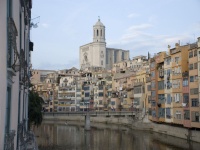
The city of Girona, on the route from the Pyrenees to Barcelona, is one of the most important historical sites in Spain, founded by the Romans and later turned into a Moorish stronghold. Sitting astride the confluence of the Onyar and Ter rivers, this quaint medieval city attracts hordes of tourists from the Costa Brava resorts and Barcelona. All are lured by the experience of walking through the old quarter, the Call, with its narrow alleyways and ancient stone houses. Inside the ancient walls are such gems as the 12th-century Benedictine monastery of Sant Pere de Galligants and the 14th-century cathedral built in the Catalonian Baroque style. The cathedral can be accessed by climbing up 90 steps. It includes a museum containing art works and rare manuscripts. Also of particular interest are the restored 12th-century Arab baths with their central octagonal pool, and the fascinating Jewish quarter where, between the 9th and 15th centuries, the culture and religion flourished on the narrow, steep streets. The arcaded promenade, the Rambla de la Llibertat, is lined with delightful cafes and shops selling souvenirs, crafts, antiques, and curiosities. In addition, the city is well supplied with museums and galleries.
Address : Tourist office: Joan Maragall, 2
E-mail : [email protected]
Website : www.girona.cat
Telephone : Tourist office: +34 972 010 001
Opening times : Tourist office: Monday to Friday from 8am to 8pm, and on Saturday from 8am to 2pm and 4pm to 8pm. In July and August the office is also open on Sundays, from 9am to 2pm

Granada is a high altitude city of romance and folklore, boasting one of the most popular tourist attractions in Spain: the Alhambra. A palace-fortress built up between the 9th and 16th centuries, the Alhambra is the most important and spectacular piece of Moorish architecture in Spain. Set against the backdrop of the Sierra Nevada Mountains, the huge complex includes the Summer Palace with its fountains and gardens, the Palacios Nazaries with its intricate ornamentation, and a hilltop fortress. The queue to get into this UNESCO World Heritage Site gets ridiculously long and tickets should be booked online or booked weeks in advance to avoid disappointment. At least one full day is required to really explore the vast complex. Although the Alhambra is the city's main attraction, Granada boasts a number of other gems, including the Cathedral containing the Royal Chapel where Isabel and Ferdinand of Spain lie buried, and a Moorish medina area, known as the Albaicin, which has labyrinthine, narrow streets and whitewashed houses. North of Granada is Sacromonte Hill, famed for its cave dwellings, which were once the home of a large gypsy community. The Interpretation Centre has an ethnographic museum detailing the history and culture of the cave dwellers.
Website : https://www.alhambradegranada.org/en/
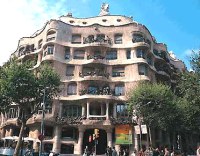
Commonly known as La Pedrera, Casa Mila is an iconic construction by creative genius Antonio Gaudi. It was his last civil work before dedicating all his time to the assembly of La Sagrada Família. The building is a UNESCO World Heritage Site and demonstrates the signature style of Gaudi with elaborate designs, globular shapes, assorted sculptures, colourful tiles, and intricate details. Built between 1906 and 1912, the distinct architecture of La Pedrera and her counterparts was unconventional and unheard of in the popular Spanish architecture of the time. The remarkable building is now a cultural centre that organises a range of activities and hosts exhibitions of various kinds. Areas open to visitors include: the roof, providing lovely views and a close look at the weird and wonderful architectural elements on top of the building; the Espai Gaudi, an attic space dedicated to an exhibition on Gaudi's life and work; the La Pedrera Apartment, an area that recreates the home and lifestyle of a bourgeois Barcelona family in the early 20th century; and the spectacular courtyards and exhibition rooms of the first floor. Guided tours are available in multiple languages but these must be arranged in advance.
Address : 92 Paseo de Gracia.
Website : www.lapedreraeducacio.org
Telephone : +34 932 142 576
Transport : Diagonal metro station
Opening times : Daily 9am to 6.30pm (4 November to 28 February); daily 9am to 8pm (1 March to 3 November).
Admission : €22 (adults), €11 (children aged 7 - 12). Concessions available.
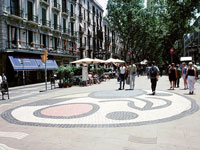
Arguably the most famous street in Europe, the wide tree-lined boulevard known as La Rambla (or Las Ramblas) is a long continuous pedestrian avenue that technically changes names five times as it cuts through Barcelona's Old Town, the Barri Gotic, from the Placa Catalunya to the city's port. It is lined with cafes, restaurants, and shops, usually thronged with leisurely walkers enjoying the sights and sounds. The sprawling marriage of nature and creative architecture and ornamentation that is Gaudi's Guell Park is a must. The pretty square of Placa Reial, enclosed by impressive buildings and promising some fantastic restaurants and nightclubs, is a popular social venue and sometimes hosts concerts and live performances. Also look out for the iconic mosaic by Joan Miro as you walk over it, near the Liceu Theatre. The street is wonderful for shopping and attracts all sorts of buskers and street artists. It is a great area to visit at night, but travellers should note that the southern end of La Rambla becomes somewhat seedy after dark and is an unofficial red light district.
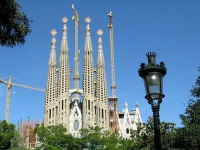
Designed by modernist architect Antoni Gaudi, the bizarre Sagrada Família is one of Catalonia's most intriguing landmarks. Building started in 1882, but it remains unfished and an object of controversy. Gaudi worked on what was considered his masterpiece until his death in 1926. The structure imbues his characteristic Art Nouveau style and creates a unique interpretation of the Gothic architectural tradition. Gaudi had models and plans for the completed church were mostly destroyed during the Spanish Civil War and those leftover have been disputed since. The extraordinary building is a UNESCO World Heritage Site, and is fascinating even to those who don't find it beautiful. The church has been consecrated and is used for religious services. When it is complete it will have 18 towers and is expected to be the tallest church in the world. The anticipated date of completion is 2026 (the centenary of Gaudi's death) but this may prove ambitious. The two completed facades of the church, the Nativity Facade and the Passion Facade, are very different but both incredible, and the roof of the nave is one of the most stunning features. Visiting the church is an absolute must for travellers in Barcelona.
Address : 401 Calle Mallorca.
E-mail : [email protected]
Website : www.sagradafamilia.org
Telephone : +34 932 073 031
Transport : Metro to Sagrada Familia stop
Opening times : Daily from 9am to 6pm. Opening times may change to accommodate events.
Admission : Basic €17, Gaudi House Museum €5.50, and Familia and Towers €32. Concessions available.
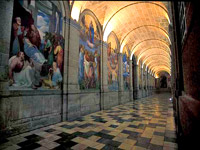
Topped by four spiral towers, the huge granite edifice of the monastery is a foreboding sight in the town of San Lorenzo de El Escorial. About 30 miles (50km) northwest of Madrid, El Escorial was a marriage of Roman Catholic power and Spanish. Once a monastery and a royal palace, this UNESCO World Heritage Site was completed in 1584 and took almost 21 years to build. The complex was built by Philip II as a memorial to his father, Charles V, as a summer residence and as a final resting place for Spanish royalty. The complex is similar to the Alcazar of Seville and the Alhambra of Granada in layout, but the architectural style and decor is far more austere. It also operates as a gallery with paintings and tapestries, containing works by El Greco, Hieronymus Bosch, Titian, and Tintoretto. Additionally, a magnificent vaulted library, covered in frescoes, contains a priceless collection of more than 60,000 ancient manuscripts. No photography is permitted in the complex. El Escorial is best explored on a guided tour or with the audio guide as the basic ticket doesn't grant access to as many areas and the majority of textual explanations are in Spanish.
Address : Calle Juan de Borbon y Battemberg
Telephone : +34 918 905 903 or +34 918 905 313
Transport : Bus 661 and 664 from Madrid, or the Madrid-El Escorial train
Opening times : Tuesday to Sunday from 10am to 6pm (until 5pm between October and March)
Admission : €12 (unguided). Guided tours and audio guides available for extra cost. Concessions available.
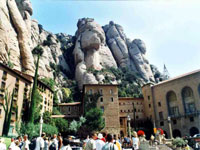
One of the most visited sites in Catalonia is the monastery at Montserrat, 35 miles (56km) northwest of Barcelona. The monastery is surrounded by strange rocky crags and caves, and was founded in 1025 to celebrate local visions of the Virgin Mary. It has become one of the most important pilgrimage sites in Spain, sitting atop a 4,000-foot (1,200m) high mountain and housing about 80 monks. Its main claim to fame is a 12th-century Romanesque wooden sculpture of a black Virgin Mary, known as La Moreneta, which thousands come here to see and touch. There is lots to see at Montserrat, which has a fascinating museum housing masterpieces by artists like Caravaggio and Picasso, as well as exhibitions on the history of the sanctuary and the wider culture, religion, and history of Spain. It has been traditional since the Middle Ages for young people from Barcelona and surrounding regions to make the pilgrimage to Montserrat and watch the sunrise from the heights at least once in their lives. The hike to the monastery is still popular for both pilgrims and travellers. The monastery on its mountain perch is most conveniently reached by cable car.
Website : www.montserratvisita.com/en/index.html
Transport : Train from Espanya station (one hour)
Opening times : Opening times vary according to section and season - check the official website for details.
Admission : Entry to the monastery is free, but the funicular ride to the Holy Grotto is €10 (return).
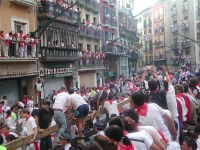
Hordes of tourists flock to this town in Navarre, northern Spain, in early July each year for the Running of the Bulls, officially called La Fiesta del Fermin. The festival, in honour of the city's patron saint, was made famous by Ernest Hemingway's novel The Sun Also Rises, and it has become one of Spain's most popular events. A bust of Hemingway stands outside Pamplona's bullring, where the 8-day extravaganza of dancing, dashing through the streets ahead of rampaging bulls, and drinking, begins. The practice of driving bulls through the centre of Pamplona started in the 19th century as the most practical way to get them to the ring, and for many years the city authorities tried to prevent the practice of running with the bulls. Aside from the festival, though, Pamplona is worth a visit any time of year, boasting lush parks, a splendid Gothic cathedral, a huge citadel, and a quaint old quarter. Pamplona is the capital of the province of Navarre, but its roots are Basque and a large percentage of its population are Basque nationalists. Those joining the throng of travellers who arrive especially to run with the bulls should note that the adrenalin-pumping activity is genuinely dangerous and every year there are serious injuries.
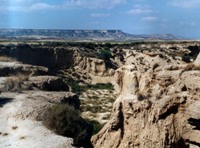
The UNESCO Biosphere Reserve of Parque Natural de Barenas Reales is a semi-desert landscape. The malleable clay, chalk, and sandstone of the landscape has been eroded into surprising and unusual shapes by wind and rain over the millennia. Vegetation of any kind is scarce in the reserve, as is human habitation, and the streams that flow across the barren land are seasonal. The rugged cliffs, hills, and ravines are home to Egyptian Vultures, Golden Eagles, and Peregrine Falcons, with a total of 24 species of birds of prey, as well as many other bird and animal species. Visitors to the park can also see the ruins of Peñaflor Castle, while the nearby towns of Arguedas and Valtierra boast a variety of attractions and historical sites for visitors to enjoy, as well as accommodation. The region is actually comprised of three nature reserves and is an absolute joy for photographers. There are a number of well signposted routes traversing the park which can be followed on foot, by bicycle, on horseback, or by car, and a number of reputable tour companies can arrange tours and activities within the park.
Telephone : +34 948 820 020

One of Madrid's famed art galleries, the Reina Sofia is dedicated to 20th century Spanish art, having been designed to give Spain a museum to equal France's Pompidou Centre and London's Tate Gallery. The museum was opened by Queen Sofia in 1986 and is housed in the former Hospital de San Carlos. The artworks displayed here include those of Spanish masters Juan Gris, Julio Gonzalez, Salvador Dali, Equipo Cronica, Gerardo Rueda, Joan Miro, and Pablo Picasso, among others, and there are also international artists on display. The star attraction of the museum is Picasso's controversial Guernica, depicting the Nazi bombing of the Basque town in 1937 in support of Franco's cause in the Spanish Civil War. Until 1980, this famous painting hung in New York's Museum of Modern Art. The top floor of the museum is a library dedicated to art, and there is a bookshop and a cafeteria. There is also outdoor sculpture garden, which is pleasant to stroll through. The museum is immensely popular, especially when there are high-profile temporary exhibits, and the queues can get very long making it well worth booking your tickets online in advance.
Address : 52 Calle Santa Isabel
Website : www.museoreinasofia.es
Telephone : +34 91 774 1000
Opening times : Monday, Wednesday, Thursday, Friday, Saturday 10am to 9pm; Sunday 10am to 2.30pm and limited exhibitions open between 2.30pm and 7pm; closed Tuesdays.
Admission : €10 (general); concessions available.
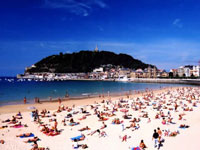
The Basque region's most popular beach, La Concha, is to be found in the genteel resort city of San Sebastian, 62 miles (100km) east of Bilbao. The town became fashionable as a summer getaway during the reign of Queen Isabel when she took to holidaying there in 1845. Today the town hums with boutiques, surf-shops, and nightclubs. But the elaborate boardwalk and grandiose historic mansions lend an air of sophistication, as is appropriate for a resort endorsed by bygone royalty. For a spectacular view of the sea and countryside, ride the funicular to the top of Monte Igueldo, or opt for the opposite side of the bay where it is possible to stroll through shady woods to the summit of Monte Urgull, topped with a statue of Jesus blessing the city. The town's Museo de San Telmo, housed in a Dominican monastery, displays some interesting prehistoric Basque artefacts, and a few dinosaur skeletons. The house where Victor Hugo once lived is in the nearby charming fishing village of Pasajes de San Juan, which can be reached by ferry from San Sebastian. The main attraction is the lovely beach, which is wide, spacious, and sandy. Various boat tours can be arranged from the pier.
Website : www.sansebastianturismo.com

A former Jewish ghetto, Santa Cruz in Seville is an enchanting maze of alleys, gateways, and courtyards. Every street corner has a romantic legend attached to it, with windowsills festooned with flowers and the fragrance of jasmine pervading the air. Santa Cruz is also bordered by the Alcazar, the Jardines de Murillo, and Santa Maria La Blanca, and can be reached via the Calle Rodrigo Caro. Some of the sights to look for are the Hospital de los Venerables, which contains Sevillian artworks; the beautiful mansions in the Calle Lope de Rueda; the Convent de San Jose, which boasts relics of Saint Teresa of Avila; and the Iglesia de Santa Maria la Blanca, which features Murillo's 'Last Supper'. Apart from many notable buildings, the neighbourhood is home to numerous quaint and quirky shops, art galleries, artisan workshops, hotels, guest houses, tapas bars, and restaurants, making it a tourists' paradise. Santa Cruz is also a favourite haunt for locals, and the area is fun to visit during the day and at night. Many walking tours of the district are available and joining one makes for a good introduction to Santa Cruz.
Website : http://www.spain.info/en/que-quieres/ciudades-pueblos/otros-destinos/santa_cruz_de_tenerife.html
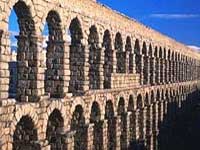
Lying on a slope of the Guadarrama Mountains with the confluence of the Eresma and Clamores Rivers below, the ancient town of Segovia is a delightful taste of the glorious past of Castile in central Spain. Segovia is 54 miles (91km) northwest of Madrid and is well worth visiting for its reputation as being the most beautiful city in Spain; the journey only takes about an hour by bus (and only 30 minutes by high speed train), making it the perfect excursion. The ancient town has been awarded a place on the UNESCO World Heritage list and is a joy for photographers, with its historic pedigree proudly displayed. The ancient Romans turned the town into a military base, leaving behind Segovia's famous aqueduct, which begins nine miles from the city and until fairly recently still supplied the town with water. The other main attraction in Segovia is the Alcazar, a massive fortified citadel, built in the 11th century, perched on the edge of town. It is said to be the fortress that the Walt Disney castle is modelled on. The town overflows with Romanesque churches, 15th-century palaces, narrow streets, and small fountain-splashed plazas, and is best explored on foot.
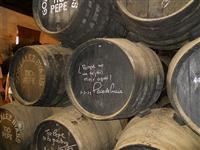
Andalusia's chalky soil is ideal for the cultivation of the palomino grape, from which the world-famous sherry (jerez) of the region is made. The main sites of sherry production in Andalusia are Jerez de la Frontera and Montilla, and these charming towns are home to plenty of self-proclaimed sherry connoisseurs, who will debate the quality of the sweet amber-coloured blends with the seriousness usually reserved for appraising the finest French wines. An increasingly popular tourist activity for visitors to southern Spain is to tour the bodegas of the region, wineries with a history dating back to Roman times, which specialise in the fermentation of palomino grapes and the production of sherry. Tasting tours of these bodegas are fun and informative, and can be combined with other great cultural attractions, such as checking out a flamenco dance performance, or admiring beautiful Andalusian horses at a dressage event. A bottle of Andalusian sherry also makes for a great Spanish souvenir for friends and family back home. Many tour operators offer day trips to the bodegas but it is also easy to explore without a guide.
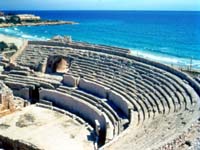
The Costa Dorada's main city, Tarragona, has almost doubled in size during the last few decades, with its residential districts continually expanding around the beautiful medieval core. Tarragona, originally built on a rocky bluff, can trace its roots back to 218 BC, when it was founded by the ancient Romans as a military base. Impressive vestiges of its ancient past still remain in the form of ruins of the Roman amphitheatre, aqueduct, forum, and other buildings situated on the Paseo Arqueologico which lead to some panoramic viewpoints. A wide boulevard called the Rambla Nova represents the modern main street outside the old city walls. A popular outing for visitors is to explore the old harbour, known as El Serrallo, to watch the fishing boats arrive and auction their catch. As if all this wasn't enough, the city also sports some excellent beaches on its doorstep, including Playa Llarga, regarded as one of the biggest and best on the Catalonian coast. Among the many museums is an archaeological museum devoted to Roman antiquities; the Diocesan Museum displaying Gothic paintings, sculptures and tapestries; and a house museum detailing the life and career of renowned cellist, Pablo Casals.
The spectacular Parque Nacional de las Canadas del Teide was declared a protected area in 1954, including an enormous volcanic crater with a circumference of 30 miles (48km) out of which rises the highest peak in Spain, Mount Teide. It is the largest, one of the oldest, and the most visited national park in Spain and has been declared a UNESCO World Heritage Site. Since 2007, it has also been one of the 12 Treasures of Spain. In contrast to the coastal regions of Tenerife, the temperatures in the reserve can be extreme: winter in the park, which lies at about 6,562ft (2,000m) above sea level, brings snowfall and gale force winds, while in summer temperatures can soar to above 104ºF (40ºC). A cable car carries visitors to the summit of Mount Teide, but many prefer to hike the route to experience the flora and fauna, including rare specimens like the violet of the Teide, the Tajinastes, as well as the many varieties of lizards and birds. There is a refuge near the summit which you can book to stay in, and reserving this accommodation includes the permit you will need to climb Mount Teida.
Opening times : Cable car operates between 9am and 4pm daily, weather depending

One of Madrid's most famous attractions is the 19th-century Prado Museum, one of the world's greatest art galleries, with more than 7,000 paintings that include masterpieces by Fra Angelico, Botticelli, El Bosco, Titian, Rembrandt, and Velazquez. The museum began as a Royal collection, which succeeding dynasties have added to. The collection naturally focuses on the Spanish masters, particularly Goya, whose exhibited works fascinatingly follow the development of his painting from the sun-soaked early scenes of joyful festivities to the grim madness characterising his 'black period'. The Prado has few equals - and whether you are an art lover or not, you should check out this magnificent Madrid attraction. The collection is vast so cater at least a few hours to really be able to appreciate it. There is a cafe and restaurant in the museum, as well as a gift shop and bookshop. Tickets can be booked in advance online, allowing the prepared to skip entrance queues. Guided tours are available, but groups wanting a tour must make reservations at least 24 hours in advance. Audio guides are available for hire in multiple languages. No photography is permitted in the galleries.
Address : Paseo del Prado.
E-mail : [email protected]
Website : www.museodelprado.es
Telephone : +34 913 302 800
Opening times : Monday to Saturday 10am to 8pm, Sundays and holidays 10am to 7pm.
Admission : €15 (general); €7.50 (reduced).
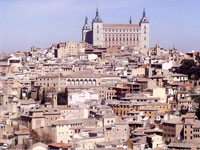
The magnificent hilltop city of Toledo, about 43 miles (70km) southwest of Madrid, was immortalised by Spain's renowned artistic genius El Greco in a cityscape that currently hangs in the Metropolitan Museum of Art in New York. The city has changed little since El Greco captured it on canvas in 1597, with its golden spires and Gothic buildings spreading across the Tagus River Gorge, overlooking the plains of New Castille. Toledo was established by the Romans in about 192 BC and some Roman ruins are still visible outside the city walls. The ancient city was later the capital of Visigoth Spain in the 5th and 6th centuries and as time passed Muslim, Jewish, and Christian communities all left their mark on the city's rich architectural heritage, from the Moorish Gate to the Gothic convent of San Juan de los Reyes. Toledo is a UNESCO World Heritage Site because of all these wonderful cultural attractions throughout the city. Pride of place is held by El Greco's 'Burial of the Count of Orgaz', painted on the wall of the Santo Tome. Be warned that the town's attractions and its main street are packed with tourists throughout the summer.

Travel Guide powered by Word Travels, copyright © 2023 Globe Media Ltd. By its very nature information in this travel guide is subject to change at short notice and travellers are urged to verify information on which they're relying with the relevant authorities. Neither Globe Media Ltd nor Travel Vogue can accept any responsibility for any loss or inconvenience to any person as a result of information contained above.